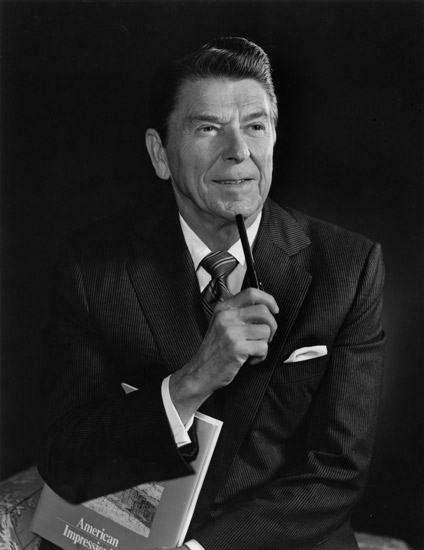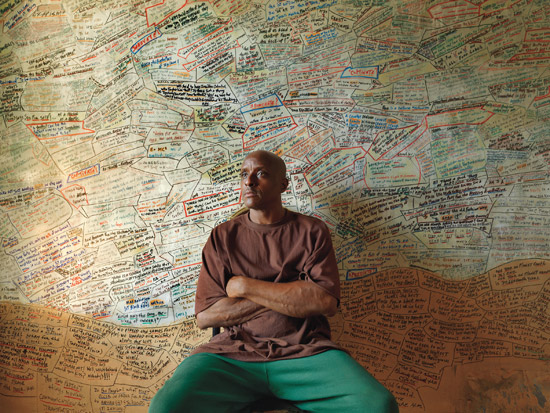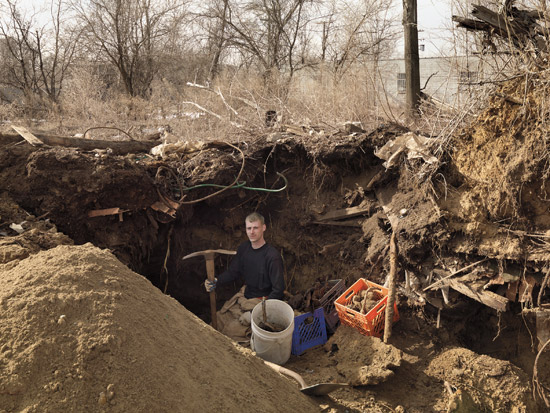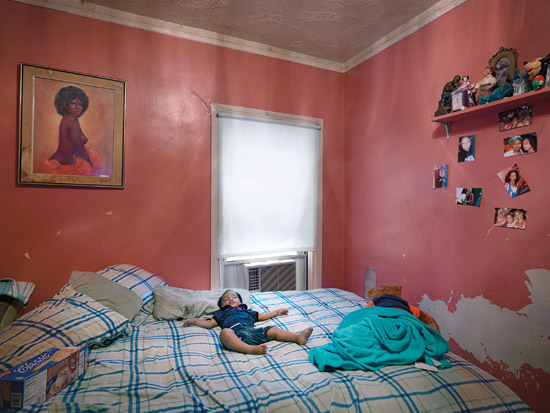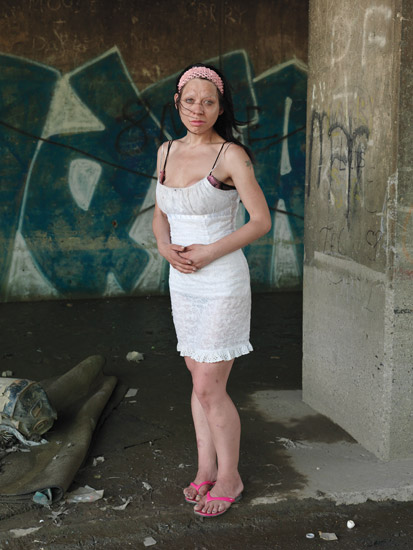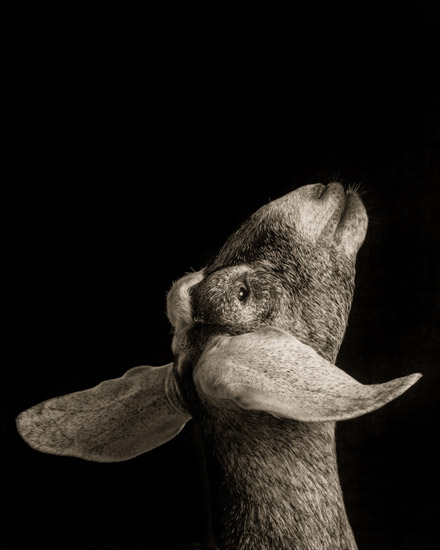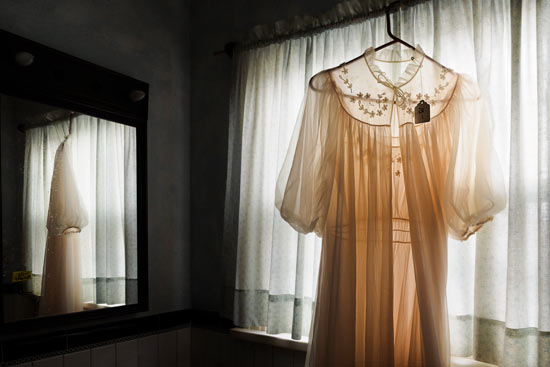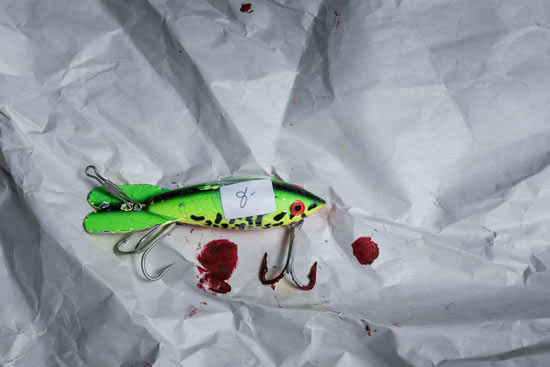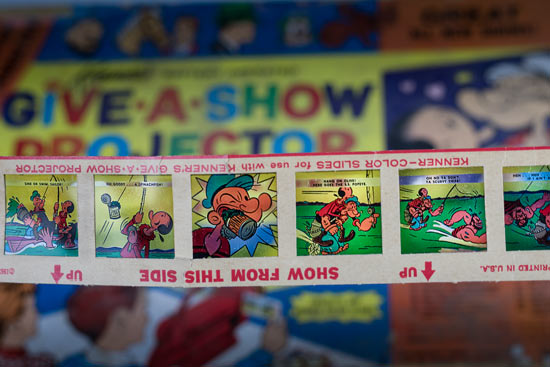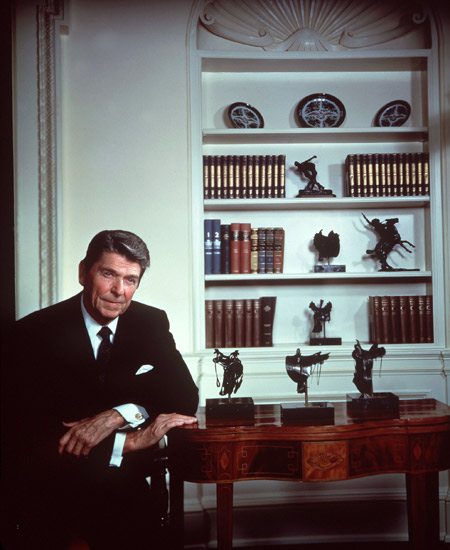
I'm surprised I haven't posted Ronald Reagan before. Jimmy Carter prompted me to do so. Here are a couple of Ronnie from 1980, photographed in colour as well as b/w. Which do you prefer?
Ronald Reagan looking high-brow, by Yousuf Karsh

Just one of the several black and white portraits of Jimmy Carter that Karsh made in 1981. Karsh photographed a whole twelve US presidents, coming out of retirement for the 12th:
Bill Clinton.
Today is Carter's 91st birthday. Check out this piece on WNYC's
The Takeaway, 'What Life Would Be Like if Jimmy Carter Won a Second Term.' "The Supreme Court might be a lot more liberal. Environmental protections might be stronger." He lost, of course, to
Ronald Reagan.

Claire A. Warden's 'Mimesis' series of mysterious, magical images, references her diverse ethnic background. She says "When looking at these images, the urge to ask "what is it?" echoes the question, "what are you?", a question that has been directed towards me countless times."
This confident young artist impressed me enormously when we met at the Photolucida portfolio reviews. I recognized her images immediately, having voted for her in a competition I judged earlier this year - in fact the exhibition of winners from
Flash Forward opens in Toronto on October 8, 2015. She also has solo exhibition at the
Center for Fine Art Photography with this same series, now until October 31, and has been selected as a
Critical Mass finalist. No flies on her!
"I use saliva and manual manipulation as part of my photographic process, which steers the work away from the signifying functions inherent to the medium of photography. These methods are used as symbolic acts to expose the biologic and socio-cultural forces that stimulate the emergence and performance of an identity. This process produces a series of images that reveal certain truths in identity and simultaneously the inadequacies of language to describe oneself. Resembling systems of the natural sciences - microscopic, topographic and celestial - the photographs allegorize the complexity of systems that make up an individual and the perception of self."
Be sure to also look at Claire's beautiful series Salt Studies in Preservation and Manipulation.

From Detroit: Unbroken Down, published by powerHouse Books, image © Dave Jordano
"Detroit: Unbroken Down is not a document solely about what's been destroyed, but even more critically, about all that has been left behind and those who remain to cope with it."
Dave Jordano was born in Detroit, Michigan, in 1948. He made a series of photographs around Detroit in the 70s as a burgeoning documentary photographer. He says on his website, "...eager to join the ranks of such notable heroes as Walker Evans, Eugene Atget and Robert Frank, while all the while sitting in my ivory tower, oblivious to the responsibilities of my post-graduate responsibilities and entering the work force. Reality ensued and I became a commercial photographer, leaving behind my documentary aspirations." Jordano's bio lists him as leaving the commercial world for fine art in 2003.
Now forty years later, Jordano returned to Detroit and for the last few years has been producing a more positive representation of his childhood city than the media has since the recession. There are many wonderful, warm images over on Jordano's site, replete with informative captions. It promises to be a great book.
All images from Detroit: Unbroken Down, published by powerHouse Books, image © Dave Jordano. Out now!
What do you see here? Personality? Are the fauna of Langley, Washington, and the photographer relating to each other during their sitting? In
Kevin Horan's project he photographs the neighbors, albeit four-legged hoof-footed ones. Thumbing through these, the resemblances to your friends may not be as clear as they are in, say, Jill Greenberg's
monkey portraits, but still there's something in their faces and poses. Xenia here for example is clearly "working it."
As great as these lovelies are online, Kevin's prints make for a whole other experience. Great blacks! Another fabulous portfolio as seen at
Photolucida!
The Bank of Canada honored the historic reign of Queen Elizabeth on September 9th, 2015, with the launch of a commemorative bank note. The note is a variation of the existing $20, and features this portrait from 1951 of then-Princess Elizabeth, by
Yousuf Karsh. The same photo, with her tiara removed, was previously used for the 1954 Canadian Landscape series as well as for a commemorative note in 1967 marking Canada's centennial.
If you like that sort of thing you can read more about the new note, and Canada's bank note history, in this
interesting article.
In '
Face,' the latest book from Bruce Gilden, the extreme-close-ups are cited as "collaborative," with the subjects giving permission to have their picture taken in a departure from his usual street habits.
From the publisher: "A defining characteristic of Bruce Gilden's photography is his creative attraction to what he calls 'characters', and he has been tracking them down all through his career."
"Every photographer has their own artistic vision, especially portrait photographers; I am one of those and my vision is to collaborate with the subject, documentary-style, to portray them as they are at that moment.
In March I photographed Bruce Gilden, the author of 'Face,' for a British magazine. We met on a street corner in NYC. He pointed out he was dressed like a "bum" and mentioned that no one messes with him as he is "kinda aggressive." He told me a story about throwing a famous photographer up against a wall because he didn't like some comment he made.
"I idolized my father. He screwed me around," said Gilden in a 2010
interview with The Guardian. "The reason I stick a flash in people's faces is to get back at him in some way."
All of this may contribute to his current oeuvre: extreme close-up flash-lit images of faces ravaged by life - the intro talks about the "babies and sorority sisters" on social networks and states in contrast "here are Bruce Gilden's family." Yes they are extreme portraits, not easy on the eye.
Avedon in his 'Out West' series showed a similar sort of folk but with a certain beauty - Gilden's portraits have none of that and anyone stepping in front of his flash lit camera should be aware that he is not out to capture beauty, but the harsh side of life. In some ways these days with the cult of the selfie, retouched images and social media I can understand where he is coming from but it ain't pretty." Janette Beckman, August, 2015
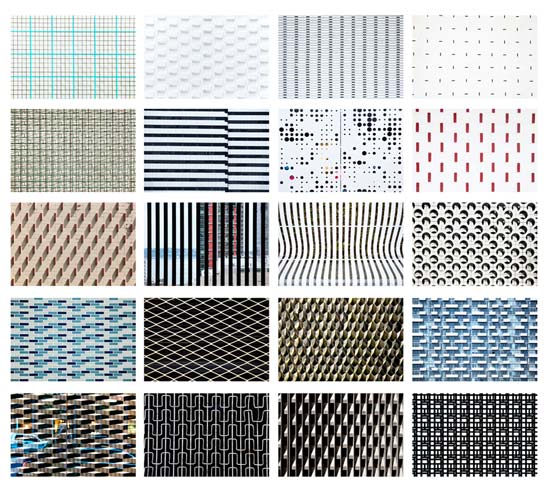
Another find at
Photolucida, I knew
Ben Marcin's series 'Last House Standing' from having seen it in various settings and I was interested to hear about the rest of his projects. The photographs in this feature are from two ongoing series: Grids, and Street.
"'Grids' is about different types of structures found in urban settings. These buildings are designed to accommodate goods, cars and people. Viewed individually, few of them are particularly notable in appearance. However, by carefully assembling them into a series of patterned grids, I tried to produce an added dimension, a patchwork of the visual noise that surrounds us."
"Our cities are almost completely carpeted in concrete and asphalt. According to the NYC Department of Transportation, there are over 12,750 miles of sidewalk throughout New York alone. Streets and sidewalks are an essential, although oft-maligned, component of our urban infrastructure. They allow us to get from Point A to B efficiently and relatively cleanly. However, like the air we breathe and the water we drink, all of this hard stuff goes largely unnoticed - unless we're trying to avoid a pothole or protruding crack or some other small mess that presents itself on our path to wherever. Rarely do we really look at what we're walking on."
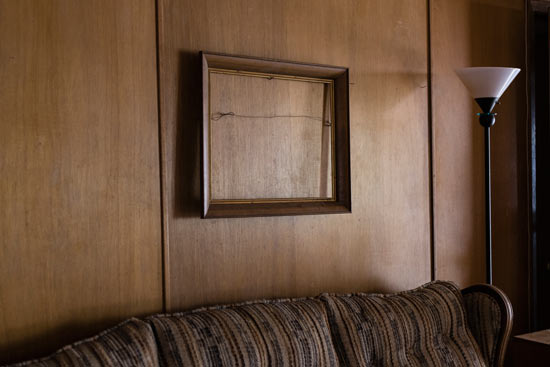
Norm Diamond was among my reviewees at the wonderful Photolucida portfolio event in April, 2015. His wistful, and sometimes puzzling, photographs from "What's Left Behind" are made at estate sales.
"Estate sales are commonplace in America. They frequently take place in homes once lived in by the elderly, who have since died or moved on to a nursing home. Their children hire companies to catalog and sell their parents' possessions," saith he.
"After getting past the massive arrays of dishes, furniture, and jewelry, one can find poignant mementos of strangers' lives. Reminders of life's finite cycle are present everywhere. They make me think of my parents and the possessions they left for my sister and me.
"I take pictures during the sales themselves. At first I was self-conscious about shooting, but after a while I realized no one seems to mind. Shoppers and sellers are much more interested in buying and selling. I also sometimes purchase items at the sales and photograph them in another setting with better lighting and background."
Norm plans to continue with this series, and I think people will be fascinated, and relate to the photographs. Perhaps they may make a person reconsider how much stuff they are holding on to, and how whomever is left behind will have to cope.
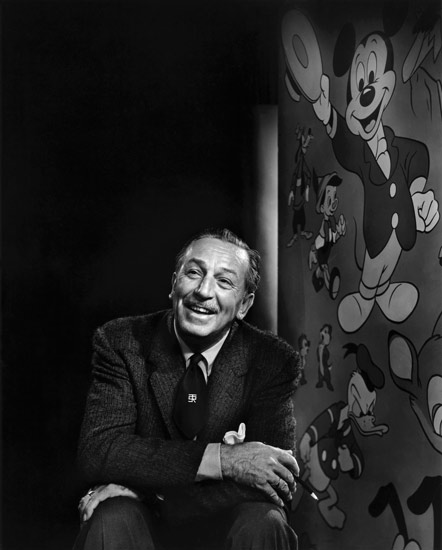
Just because. Walt Disney by Yousuf Karsh.

